Su-33, MiG-29K and Yak-141. Battle for the deck. H. 2
Let’s refresh our memory and recall the main characteristics of the Yak-141, MiG-29K, Su-33, as well as the most advanced deck aircraft of foreign powers - the American F / A-18E “Super-Hornet”, the French “Rafal-M”. And at the same time, the MiG-29KR, the aircraft that was delivered to the Russian Navy in the 21st century as the basis of the TAKR Admiral air group fleet Soviet Union Kuznetsov. "
Note: red highlighted questionable numbers. So, 1280 km for the "Super Hornet" is most likely not a practical range, but one of the options for the combat radius, and the 250 m / s rate of climb of the Yak-141 is taken from an unreliable source. There are other comments, which will be discussed below. The data on aircraft performance characteristics differ from different sources, therefore, for uniformity, the author took as the basis the performance characteristics on airvar.ru
The first thing I would like to draw your attention to is that the author deliberately simplified the comparison criteria, no “limit on disposable normal overloads”, “established reversal limits” and other “angular velocities” in the table presented. Not because these indicators are not needed - quite the contrary, they are precisely what is needed if we are going to compare the capabilities of airplanes seriously. But most readers do not have the necessary terminology and theory, so I would have to write a series of articles on the combat maneuvering features of the aircraft, and this is far from interesting for everyone (and, frankly, it’s not a fact that the author could do it correctly). So we will limit ourselves to much simpler comparisons.
On the other hand, the reader who is interested in will not find a number of usual indicators in the table offered to your attention. For example - there is no combat load. Why? The fact is that a number of aircraft indicators are extremely specific, and should be assessed only in conjunction with other indicators. For example, take the mass of an empty aircraft and the maximum take-off mass. Obviously, the first is the mass of the aircraft itself, without fuel and outboard armament, without a pilot and without any equipment, and the second is the maximum with which the aircraft is able to detach from the surface of the earth without violating the flight safety rules. Accordingly, the difference between these two quantities is the payload (including all of the above), which this or that aircraft can “carry away”. In the table, it is designated as “Payload, kg (difference between empty mass and max. Take-off)”. At the same time, it is of no less interest and that payload that an aircraft with full internal tanks or with a full supply of fuel (including PTB) can lift - so that the reader does not have to calculate in mind, these figures are calculated in the table.
Or, for example, the combat radius. Everything is very bad with him, because this indicator depends on the mass of parameters. The fact is that the combat radius of a multi-purpose fighter that performs a high-altitude flight and that took a full tank of fuel and hung off the PTB, and from the combat load took two medium-to-air missiles and the same short-range missiles - this is one value. And the combat radius of the same aircraft, which took several tons of bombs and flying towards the target along the low-altitude profile, is a completely different value.
As an example, we take Rafale-M, for which the combat radius of 1 800 km and the combat load in 8 000 kg are usually indicated. Many, alas, inattentive readers simply rejoice over the French aviation industry and sincerely believe that Rafale-M is capable of dumping 8 tons of ammunition at an object remote from the airfield on 1 800 km. In fact, this is certainly not the case.
It is quite possible, of course, that the Rafale-M combat radius will indeed amount to 1 800 km - but this if the plane has fully filled internal fuel tanks (these are 4 500 kg of fuel) and all the PTBs that it can carry (this is also 7 500 kg of fuel). But in this case, the margin for all other payloads (including the mass of the pilot and equipment) will be only 500 kg. That is, in fact, “Rafale-M” will have a combat radius in 1 800 km with weapons from a pair of light air-to-air missiles, no more. Of course, here we do not take into account the possibility of refueling in the air, but this is not necessary, because we evaluate the qualities of a particular aircraft, and another aircraft (refueling) is also needed for refueling. So let's not multiply entities beyond what is necessary.
But back to the "Rafal-M". Can he "take on board" 8 tons of combat load? Without a doubt - but only if he abandons the PTB, limiting himself only to fuel, which is placed in his internal fuel tanks. And, of course, in this case, the combat radius will be much less than the 1 800 km indicated in the press.
The same applies to the Super Hornet. Its maximum take-off weight exceeds that of “Rafale-M” by approximately 33%, the fuel supply (with PTB of both and the other aircraft) is approximately 30%, and it can be assumed that with such initial data, the combat radius of the “Super Hornet” with a maximum combat load, it will probably be a little less than that of the Rafale-M. However, in the reference books we read a truly furious difference, because for “Super Hornet” 760 km is usually indicated - that is, the entire 42,2% of Rafale-M!
Let's try to look at it a little bit from a different angle. Suppose we have some combat mission - to deliver 8 tons of bombs to a stronghold of world terrorism (who said Washington ?!). In this case, Rafale-M will take 8 tons for external hangers and 4500 kg of fuel into the internal tanks, and its take-off weight will be maximum and will be 22 500 kg. In this case, Rafale-M cannot take any PTB, of course. But the Super Hornet takes 8 000 kg of bombs, a full tank of fuel (6 531 kg) and, in addition, masters another outboard tank (1 816 kg) - total take-off weight of the American aircraft will be 29 734 kg (which is 32% more than the same indicator "Rafale-M"). But at the same time, the mass of fuel in the internal tanks and the only PTB Super Hornet will be 8 347 kg of fuel (85,5% more than Rafale-M)! Does anyone still believe that the combat radius of the French aircraft with such initial data will be greater than that of the American? In other words, it is most likely that 1 800 km of combat radius for Rafale-M is with a maximum of PTB and a pair of light air-to-air missiles, and 760 km of Super Hornet for its shock configuration, with God knows how many tons of combat load. And we still do not know anything about the flight profile!
But even if we seem to know the combat radius in comparable categories (say, in the version of a fighter with a PTB) from different countries, it is far from a fact that they are comparable. The fact is that the combat radius implies (if briefly) flying to the greatest possible distance, performing a combat mission and returning home with a small emergency supply of fuel for unforeseen needs. The combat mission for the fighter will obviously be air combat and the destruction of the enemy. So, different countries can have different things here - and the emergency reserve rate, and an understanding of how long the air combat will last, how much of this time the aircraft will use the afterburner mode of the engines (which requires a large over-expenditure of fuel relative to the unflow mode) and so on. d. It is unlikely that anyone can guarantee all these data from countries whose planes we compare are the same - and without this, alas, the comparison of the “bare figures” of combat radii is unlikely to be correct.
On the other hand, there is such an indicator as practical range. It is measured in kilometers and shows how much a plane can fly (one way) being fully loaded (PTBs are negotiated separately), but without a combat load, taking into account the fuel consumption for takeoff and landing operations and a small emergency reserve of fuel. In fact, this indicator for airplanes of different countries is undesirable to compare “head-on,” but it still has fewer errors with it than when comparing combat radii. At the same time, for airplanes of the same generation (in our case, it is important, for example, the absence of internal armament compartments for all types of compared machines), it can be assumed that the combat radius at the same combat load will be correlated approximately in the same way as the practical range of the aircraft. In other words, if the practical range of “Rafale-M” and MiG-29KR is the same and equal to 2 000 km, then with equal weight (and aerodynamics) combat load, the combat radii of these aircraft will also not be the same, then they are very close, regardless of the fact that they write reference books. Once again, reference books do not lie, but the conditions for which the combat radii of aircraft are considered can vary greatly, which makes the figures for the final values incomparable.
In view of the above, instead of a combat load, we will compare various payload options and practical flight range instead of combat radii. But, besides this, it would be nice to somehow evaluate the capabilities of the aircraft in combat (for the time being, not touching their avionics, but taking into account only the maneuverability characteristics). Alas, as we said earlier, it is extremely difficult to do this according to all the rules (for example, try to find the frontal resistance of an aircraft!) And we will go in the most simplified way, comparing the thrust-weight of the aircraft for their normal and maximum take-off masses, rate of climb and specific wing load. Although there are many important nuances here, still, an aircraft with large thrust-to-weight ratio and rate of climb and less wing loading (the word “specific” is usually omitted, although this is implied) is more maneuverable in dogfight. Those readers who believe that the melee air battle is dead - please, instead of “catch up,” read “when doing an anti-missile maneuver.”
And what do we see in the end?
Yak-141 or horizontal take-off and landing aircraft?
At first glance, it is obvious that the Yak-141 loses in almost all indicators MiG-29K.
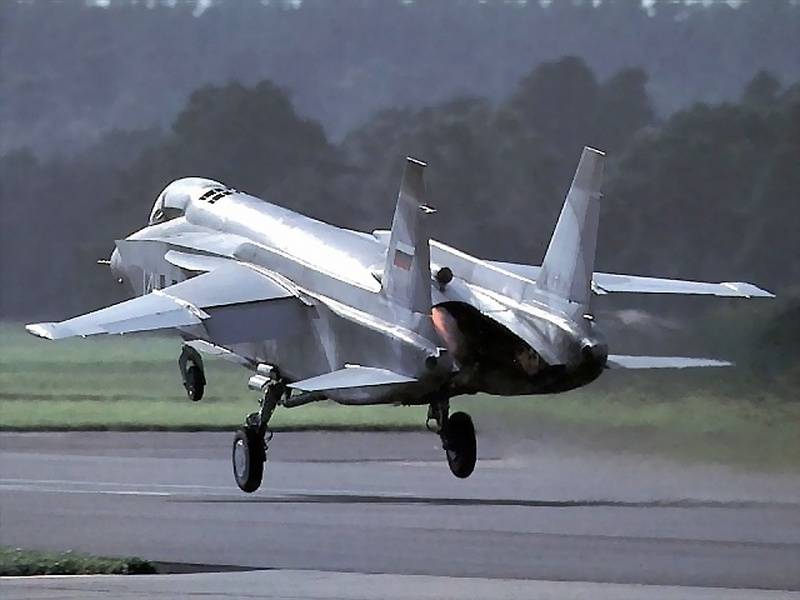
The MiG payload is 23,5% higher than that of the VTOL aircraft, while it is 12% and 27% faster at ground and at height, respectively. The practical range at high altitude with a PTB in the MiG-29K (that is, in fact, in a fighter configuration) is higher than that of the Yak-141 by 42,8%! In fact, it is this figure that characterizes the difference in the combat radii of the Yak-141 and MiG-29K when solving air defense tasks and, as we see, it is very much against the Yak-141. In addition, the load on the Yak-141 wing is significantly greater than that of the MiG-29K, the thrust-to-weight ratio in the “normal take-off” weight is on the contrary lower, and also the climb rate is lower. True, the thrust-to-weight ratio, calculated for maximum take-off weight, is still lower in the MiG-29K, and this is undoubtedly a plus of the Yak-141, but the aircraft’s effectiveness in air combat should still be assessed from the standpoint of normal take-off weight, because before engaging in combat , the plane will spend some time in the air, spending fuel on the exit to the patrol area and the patrol itself. So the fuel reserves will not be complete (in the end, the PTB can always be reset), and if the enemy is in dangerous proximity and you need to urgently lift the car into the air, there is no point in overloading the PTB aircraft at all.
The Yak-141 has less operational overload, fewer suspensions for armament, less practical ceiling ... it seems that the lag for each indicator individually does not look fatal, but VTOL is lagging behind in almost all indicators, and then, of course, quantity is already turning into quality. And as the only advantage of the Yak-141 - the possibility of vertical landing (all aircraft parameters are given under the condition of short take-off 120 m). If we compare the capabilities of the Yak-141 with the load during a vertical take-off ... then a comparison with the MiG-29K makes no sense at all for not even the obvious, but overwhelming advantage of the latter. Also, the Yak-141 did not have any special advantages in terms of the specifics of the deck aircraft. The need to provide a short take-off required a spacious flight deck. Yes, for the Yak-141 there was no need to equip the ship with arresting gear, since during vertical landing they were simply not needed, but the plane required special seats equipped with a special heat-resistant coating (it is required for the aircraft carrier’s flight deck, but for it is much higher, and the site itself must be stronger - downward exhausts are not a joke).
But, if everything described above is true, how could the Yak-141 generally participate in the “battle for the deck” described in the previous article, because its lag is so obvious? This and many other questions about the Yak-141 caused such a lively discussion in the comments that, in the opinion of the author, they should be raised again.
As we said earlier, according to the Government Decree adopted in 1977, the Yakovlev Design Bureau was obliged to create a supersonic fighter-VTOL aircraft and submit it to the state tests at 1982 in Yakovlevtsy rolled up their sleeves and ... began to develop an aircraft with a single up-and-down engine . That is, in fact, the Yakovlevs undertook to create a “Harrier, only better” - a single-engine VTOL aircraft capable of achieving the speed of the 2 mach. But it soon became clear that such a project was faced with a large number of difficulties and gradually the designers again bowed to the combined power plant. In the spring of 1979 g, they submitted to the MAP commission a draft design of an aircraft with a single P-79B-300 engine, as well as materials on an VTOL with a combined power train. According to the results of the analysis, the commission instructed the Yakovlev OKB to create a draft design of a fighter-VTOL aircraft with a combined power plant. At the same time, work on exploring the capabilities of the VTOL aircraft for short take-off (WRC) take-off in the country was just beginning - suffice it to say that for the first time the WRC from the ship's deck was made only in December 1979.
In other words, at the time of the decision to equip the fifth TAKR with a springboard, we still, in fact, did not have a very good idea of what the Yak-141 would be (a single engine, or a combined installation), we did not work out a WRC for a VTOL with a combined installation, but they could only theorize about how a VTOL aircraft would behave with this or that type of power plant at the start of a springboard. And at that time it was assumed that the use of the springboard will significantly enhance the capabilities of the Yak-141. Accordingly, in November 1980 of the commander-in-chief of the Air Force and Navy approved a refinement to the tactical and technical requirements of the Yak-141, and the task was to ensure a shortened take-off with the takeoff of 120-130 m, take-off from the springboard and landing with a short mileage. What is interesting is that in a number of publications it is indicated that a springboard with a lifting angle 8,5 hail was made on the famous NITKA, designed for a simplified energy-saving launch of Yak-141 vertical take-off aircraft. But then, when it became clear that the horizontal take-off and landing aircraft were fully capable of mastering the springboard start, the elevation angle of the springboard was increased to 14,3 hail.
Interestingly, even in 1982-1983 years. the possibility of using the springboard for the Yak-141 was considered quite actively - during these years, MAP and Air Force specialists conducted theoretical studies of increasing the capabilities of the Yak-141 both with WRC and using the springboard. Interestingly, in the comments to the previous article of the cycle, the author has repeatedly pointed out that the combined installation of the Yak-141 does not represent any benefits at the springboard start compared to the WRC (that is, a short take-off from the horizontal surface). The author could not find either confirmation or refutation of this thesis, but the fact is that at the time of the decision to equip the fifth TAKR with a springboard, this feature of the Yak-141, if it existed, was in any case not yet known.
However ... work on the bugs! We have to admit that the thesis previously put forward by the author:
incorrect in the part that by 1988, Yak had already dropped out of the "race", and only MiG and Su were "arguing" with each other. As far as one can judge, the Yak-141 finally lost the “battle for the deck” of the fifth TAKR (the future “Admiral of the Fleet of the Soviet Union Kuznetsov”) somewhere between 1982-1984: in the eighty-second from the springboard (with a slope of 8,5 degrees) for the first time MiG-29 launched, thereby confirming the possibility of a springboard launch for aviation horizontal take-off and landing, and in 1984 flights were carried out (from a springboard at an angle of 14,3 degrees) and the MiG-29 and Su-27. In addition, in 1984 the most powerful supporter of the VTOL aircraft, D.F. Ustinov.
In other words, our fifth TAKR was originally created as the carrier ship of the VTOL, which was to become the basis of its air group. Springboard was supposed to be used to increase the capabilities based on it VTOL. Knowledge of how useful (or useless) the springboard for the Yak-141 at the time of the decision (1979 g) we have not yet had. It is possible that when deciding on the "springboarding" of the fifth TAKR, the conceptual diagram of the power unit of the Yak-a (single engine or combined) was not even determined. But from the moment when the possibility of basing horizontal take-off planes on TAKR (1982-84) with much better LTX than the VTOL aircraft was confirmed, the Yak-141 went into the shadows and was in demand mainly only as a new aircraft for four previously built TAKR-ah: "Kiev", "Minsk", "Novorossiysk" and "Baku", as well as, perhaps, "Moscow" and "Leningrad".
So, the Yak-141 from the race of deck fighters for the newest TAKR dropped out.
MiG-29K or Su-33?
It must be said that in the USSR there was never a clear answer to this question. On the one hand, in the second half of 80-s, the MAP commission was inclined towards the MiG-29K, including because it was smaller and, all other things being equal, made it possible to form an air group from more machines than was possible for Su-27 . At the same time, if we look at the plans for the formation of the Ulyanovsk ATAKR air group (the seventh TAKR of the USSR with a nuclear power plant and catapults), then there were two versions of its acquisition: 24 Su-33 and 24 MiG-29K, or 36 Su- 27K. That is, Su-33 was present in the air group on an ongoing basis.
Consider the data in the table above. The first thing that catches your eye is that, despite the fact that the Su-33 is heavier, it takes not so much more space than the MiG-29K, as it may seem. With the wings folded and the Su-33 plumage fits into a square with an area of 156,8 m2, while the MiG-29K is in a square with an area of 135,5 m2, that is, the difference is only 15,7%. In addition, in the hangar, the planes are not square, but something like this:
Yes, and by mass ... Nevertheless, the mass of the empty Su-33 is only 26% more than the mass of the empty MiG-29K. Therefore, the thesis about the lower capacity of the Su-33 in comparison with the MiG-29K needs further study - it is clear that the same hangar of the MiG-29K should enter more than the Su-33, but ... 1.5-2 times? If such restrictions really exist, they are apparently related not only to the geometric dimensions of the aircraft.
The next very interesting indicator is the mass of fuel. Domestic fuel tanks Su-33 on 65% more spacious than the MiG-29K - 9 400 kg against 5 670 kg. As a result, a heavier aircraft has a significantly greater practical range - at high altitude the Su-33 is able to overcome 3 000 km, and the MiG-29K only 1 650 km, that is, almost two times less.
However, the MiG-29K can carry PTB, but the construction of the Su-33 is, unfortunately, not provided. At the same time, the practical range of the MiG-29K with the PTB is all the same 3 000 km as the Su-33. And this, in turn, means that the combat radius of the MiG-29K with the PTB in the version for solving air defense tasks (say, with two medium-range anti-submarine missiles) and the same number of short-range missiles will be quite comparable to the Su-33 combat radius with that same load. Of course, the Su-33 will be able to take a larger number of missiles, but then its combat radius will decrease. Of course, if it were possible to hang up the PTB on the Su-33, then its practical range and combat radius would have been much higher than the MiG-29K, but the Su-33 PTB does not carry.
Su-33 seems to have a preference for maneuverable combat fighter. He has less load on the wing, but at the same time his thrust-weight ratio is higher than that of the MiG-29K. As for the rate of climb, the author could not find the data for the Su-33, but for different modifications of the Su-27 it was 285-300 m / s, and for the MiG-29K it was 300 m / s. Of course, the Su-33 was heavier than the Su-27, but it had GIP, which added to it a climb, so we can assume that on this indicator between the MiG-29K and the Su-33 there was an approximate parity. The speed of these two fighters is equal both at the ground and at the height. But in general, the Su-33 should have had an advantage in aerial combat.
However, this does not mean that the MiG-29K was somehow defective among the carrier-based aircraft of the world. If we compare the same figures for the MiG-29K, Super Hornet and Rafale-M, we see that the brainchild of the MiG Design Bureau has a significant superiority over the American deck fighter in literally all respects, and the French Rafale-M wins the load on the wing, losing in speed and thrust-weight with almost equal climb rate (the advantage of the “Frenchman” is only 1,7%).
And here it is necessary to make one extremely important reservation. The fact is that when compiling the table, the author made two big assumptions in favor of foreign fighters. The first of these is this: all the jet engines of modern fighters have two indicators of power (and thrust) - the maximum power that the engine develops in the afterburner mode and the maximum power during afterburner. However, for the domestic engines of deck aircraft, a third special operation mode was introduced, which is necessary to ensure takeoff or go-around when an unsuccessful landing attempt occurs. So, for example, the Su-33 maximum engine without exhausting gear was 7 670 kgf., The maximum afterburner - 12 500 kgf, and the special mode - 12 800 kgf. In the MiG-29K engine, this difference was even greater - the maximum afterburning thrust of 8 800 kgf, and in a special mode - up to 9 400 kgf.
Without a doubt, a special regime was intended precisely for providing takeoff and landing operations. But couldn’t the Su-33 or MiG-29K pilot be able to use the “special” mode at the key moment of the battle? As far as the author is aware, there were no technical limitations on this. Nevertheless, in the table above, the author calculated the thrust-to-weight ratio of the aircraft precisely from the maximum afterburner regime, and not from the “special” one. Even in this case, we see the superiority of domestic fighters over foreign fighters in this parameter, and taking into account the “special” mode, this advantage would be even higher.
The second assumption is that the author considered the specific load on the wing independently according to the formula “normal (maximum) take-off weight of the aircraft divided by the wing area”. This is correct for foreign fighters, but not for domestic fighters. One of the many features of the design of the Su-27 and MiG-29 (and all aircraft of their families) was that the lifting force in it was generated not only by the wing, but also by the fuselage. And this means that on the wing, in the calculation, it would be necessary to attribute not all, but only a part of the aircraft mass (or, in the calculation, to add to the wing area, add on the area of the “carrying” fuselage). In other words, the load on the wing of domestic fighters is less than in the table - although the author cannot say how much less.
Thus, the MiG-29K as an air defense aircraft was, of course, inferior to Su-33 in terms of its flight data. But at the same time, he was quite at the level of the French “Rafale-M” and surpassed the main US carrier-based fighter, the Super Hornet. The smaller combat radius of the MiG-29K was completely offset by the ability to carry the PTB. Thus, the MiG-29K was fully capable of solving air defense tasks, although with somewhat lower efficiency than Su-33.
Here the truth may be asked - what are the American and French designers so “dark” and create deliberately uncompetitive aircraft? In fact, this is certainly not the case. You just need to remember that the MiG-29K and the Super Hornet and Rafale-M are not pure fighters, but fighter-bombers. And if we carefully look at the table, we will see that the American and French aircraft are significantly superior to the MiG as shock machines. That is, the MiG-29K is more like a fighter than a bomber, but the “Super Hornet” is more like a bomber than a fighter. The French and American planes are not that much worse, but the accents on them are set differently, and this gave our planes, created “with a slant in air defense,” an advantage in air combat.
But back to our aircraft. The fact is that all our conclusions about the Su-33's advantage over the MiG-29K were made only on the basis of their flight data, but not onboard equipment, but here the MiG-29K had a noticeable advantage. On the one hand, the size and dimensions of the MiG-29K, of course, imposed great restrictions on the capabilities of the equipment installed on it. So, for example, on the Su-33 was placed the radar Н001К - the ship version Н001, which was installed on the ground-based Su-27. This radar was able to detect a fighter-type target with 3 m2 EPR at 100 km to the front, and 40 km - rear hemispheres, while the azimuth viewing sector was 60 degrees. The first MiG-29 radar of the first series could detect a similar target at a distance of 70 km, having a sector of review in azimuth 70 degree, i.e. slightly larger than the Su-27 radar. However, the MiG-29K was created on the basis of the MiG-29М, that is, upgraded, and it had to install a new radar H010, in which the detection range of the fighter in PPP was 80 km. This is still less than that provided by H001K, but the viewing sector in azimuth H010 was increased to 90 degrees, that is, the pilot of the MiG-29К could scan a much larger sector of space.
Thus, the onboard radioelectronic equipment of the MiG-29K was more perfect, and, although by some parameters it was still not as good as the Su-33 avionavigation system, it was “recouped” in other, perhaps, not so noticeable, but important areas. But there were extremely tangible benefits for the MiG-29K, such as the ability to use the latest at that time P-77 air-to-air missiles, the export version of which was called RVV-AE.
As you know, the Americans used Sparrow as a medium-range missile for a long time, but its effectiveness caused many complaints. As a result, the “gloomy American genius” created an extremely successful AMRAAM rocket, far superior to its predecessor. An analogue of the Sparrow in the USSR was the family of the P-27 missiles, which, alas, with the advent of AMRAAM turned out to be obsolete. In response, the designers of the USSR created the P-77 and there is no doubt that at the time of its appearance it was completely comparable with AMRAAM in terms of its combat capabilities. So, the MiG-29K sighting system was able to use the P-77, while the Su-33 was not, and had to be content with the old P-27. Of course, the ability to use the latest air combat ammunition significantly reduced the gap in the combat qualities of the Su-33 and MiG-29K.
It is well known that the MiG-29K, unlike the Su-33, was a “universal soldier” and could use a rather wide range of air-to-air weapons, while the capabilities of the Su-33 were limited to free-fall bombs and NUR. But there is some suspicion that the ability of the MiG-29K radar to see potential targets well against the underlying surface made it possible for the MiG-29K to detect and control targets such as low-flying anti-ship missiles above the sea than the Su-33 radar could do. However, the last statement is only the guesses of the author.
As for deck specificity, everything is quite interesting here. For example, in “Su-33. Ship's epic "A.V. Fomin, who was reviewed not only by VP Sukhoi Design Bureau General Designer. Simonov, but also Colonel-General V.G. Deinek, the following is indicated - that the creators of the Su-33 took into account the specifics of the deck when reworking an airplane glider, while the creators of the MiG-29K were forced to devote all their attention to the latest equipment and engines of their aircraft, and left the glider almost the same as the land MiG-a. As a result, the Su-33, despite its size, had a lower landing speed and was, according to A.V. Fomin, more convenient for pilots when performing take-off and landing operations.
It’s hard for the author to judge how fair this is, but in any case, if the MiG-29K was worse, it wasn’t enough to make it unsuitable for basing on the TAKR.
Su-33 is often blamed for the inability to take off at maximum load from the TAKR deck. This is not entirely true. In total, the Admiral of the Fleet of the Soviet Union Kuznetsov has three take-off positions: the first, the second (with a run of 105 m, according to other data - 90 m) and the "long" third - 195 (180) m. According to calculations, from the third position Su -33 could start with a full supply of fuel and air-to-air missiles on all 12 suspensions (it was assumed that its mass would be 32 t) and with a maximum take-off weight (33 t), and from the first two - with a take-off weight of 25 to 28 tons. Recall that the normal take-off weight of the Su-33 is equal to 22,5 t.
At the same time, tests showed that at the speed of TAKR in 7 nodes and on waves in 4-5, Su-33 balls confidently start from 1 and 2 positions with full fuel and 4 air-to-air missiles, i.e. . with a take-off mass of about 30 t. At the same time, from the third position at 15 speed, the Su-33 nodes started with a full supply of fuel and 12 UR air-to-air, the take-off weight was 32 200 kg. On the other hand, it is necessary to understand that the takeoff from “short” positions with the weight of Su-33 around 30 tons was made by real aces, highly skilled test pilots: A.Yu. Semkin and world-famous VG Pugachev. No doubt, deck pilots are a real elite, but the author doesn’t know if they are allowed to take off with such a mass of Su-33 from 1 and 2 positions.
As for the MiG-29K, everything is quite simple here - airplanes of this type can take off with a maximum take-off weight from the 3 position and in normal take-off weight - from the 1 and 2. It is possible that the MiG-29K is capable of even more, but it seems that no such tests have been carried out, or the author does not know anything about them.
On the other hand, there were reports that the Su-33 was too heavy for our TAKR, and during the long-term operation the flight deck underwent deformation. It is very difficult to say how correct this information is. The author did not find official confirmation of this. Perhaps the flight deck of TAKR was indeed deformed, but was it the fault of the Su-33? Yet the ship is experiencing a lot of stress on the hull even with a little excitement, and the deformation of the deck could be the result of some errors in the design of the ship. With all due respect to the Soviet shipbuilding school, such a “monster” with the continuous flight deck of the USSR was built for the first time and errors are quite possible here. In any case, it is impossible to say that the Su-33 was too heavy for the deck plane - after all, the American F-14 "Tomcat" had an even greater mass, but was based on American aircraft carriers without any problems.
Summing up, we see the following. Other things being equal, the same aircraft-carrying ship can be based on more MiG-29K than Su-33. Of course, the Su-33 surpassed the MiG-29K in combat radius and as an air fighter, but this superiority was largely offset by the ability of the MiG-29K to use PTB, the newest air combat ammunition, as well as more modern (though not always more powerful) Avionics. At the same time, the MiG-29K was a multi-purpose aircraft, but the Su-33 was not.
Was it possible to correct those annoying shortcomings of the Su-33, which prevented him from gaining unqualified superiority over the MiG in terms of fulfilling the tasks of air defense, and at the same time letting weapon "Air-to-surface"? Without a doubt - you can. For example, the upgraded Su-27CM are able to use RVV-SD. In essence, no one interfered with the time to turn the Su-33 from the 4 generation into the 4 ++ generation, the Sukhoi Design Bureau was going to do just that: the deck aircraft of the 4 generation at the first stage and its improvement in the subsequent ones.
And if we were talking now about the air group of some promising aircraft carrier, then it would be more correct to build it on the Su-33 modification, or on their Su-33 and MiG-29K mixed air group. However, we are talking about a very specific situation at the beginning of the 90-s - the USSR collapsed, and it was quite clear that the “Admiral of the Fleet of the Soviet Union Kuznetsov” would remain our only aircraft carrier capable of receiving horizontal take-off and landing aircraft for a long time.
In the conditions of the coming collapse of the Navy and naval rocket launchers, the question of the universality of the Kuznetsov aircraft was extremely important. In the USSR, enemy AUS could attack regiments of a Tu-22М3, an APL detachment, surface missile cruisers, etc. With so many means of destruction, it was really correct to “sharpen” the TAKR air group in the air defense system in order to provide air cover for the shock forces. But literally a decade passed, and the USSR naval power remained only in the memory of those who were not indifferent. Under these conditions, the ability of the MiG-29K to strike at surface targets could qualitatively improve the capabilities of the Russian Northern Fleet. And besides - since the collapse of the USSR, we (fortunately!) Have not entered the world "hot" war (although the times of the "cold" war have already returned). Conflicts have taken a different, creeping form - Russia defends its interests, giving repulse to numerous “bootype” who are trying to turn an entire Arab conglomerate into a mad and cave “caliphate”. For use in local conflicts, for the "projection of force" is more useful than a multi-purpose aircraft carrier, whose air group is capable of destroying air, ground and surface targets, and not just air.
Thus, in the specific conditions of the 1991, the MiG-29K was preferable to the Su-33. But the fine-tuning of the aircraft was simply not enough money. And if there were money, could the Mikoyan OKB be able to bring to serial production the MiG-29K within a reasonable time?
Without a doubt - could. In fact, they demonstrated this by creating the MiG-29K for the Indian Navy.
Продолжение следует ...
PS The author of the article expresses special gratitude to Alexei "Taoist" for pointing out the mistakes made in the previous article.
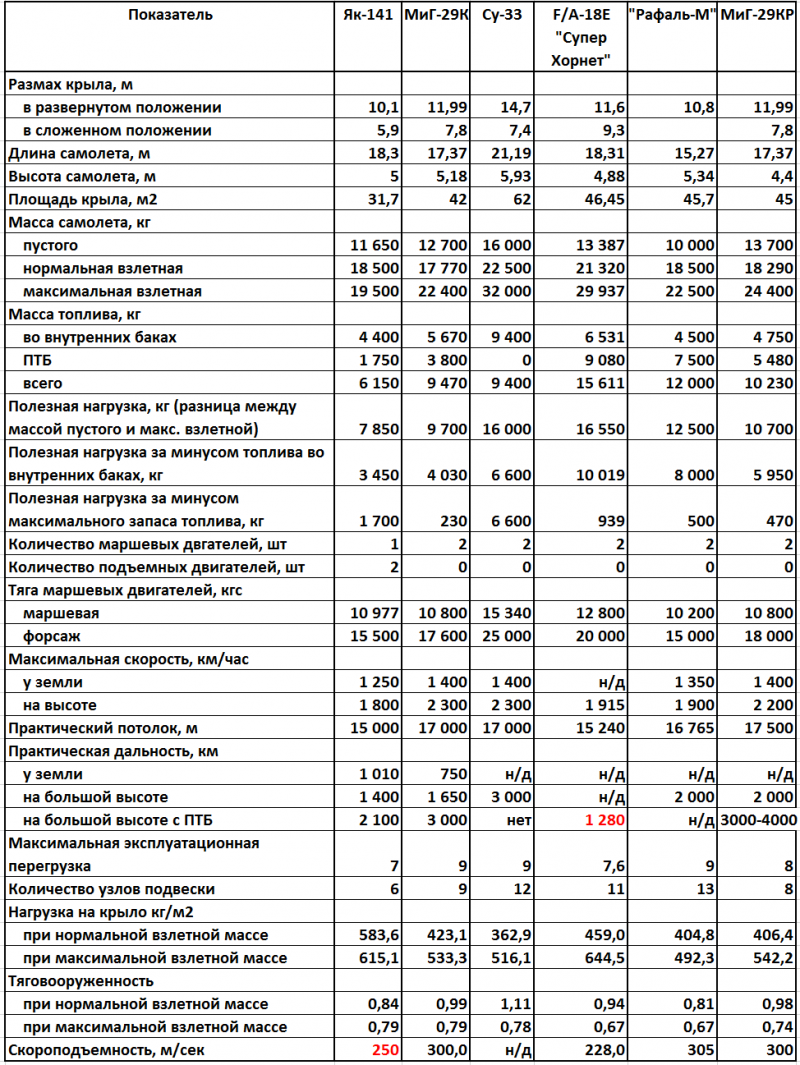
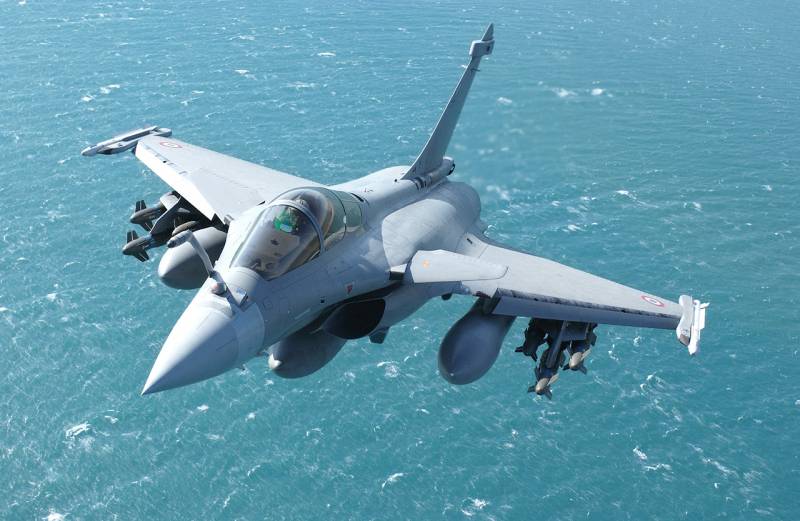
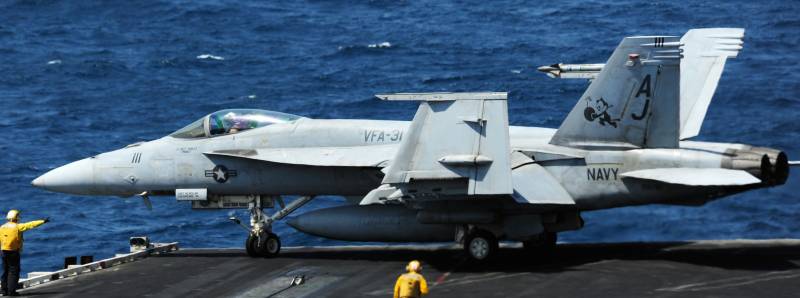
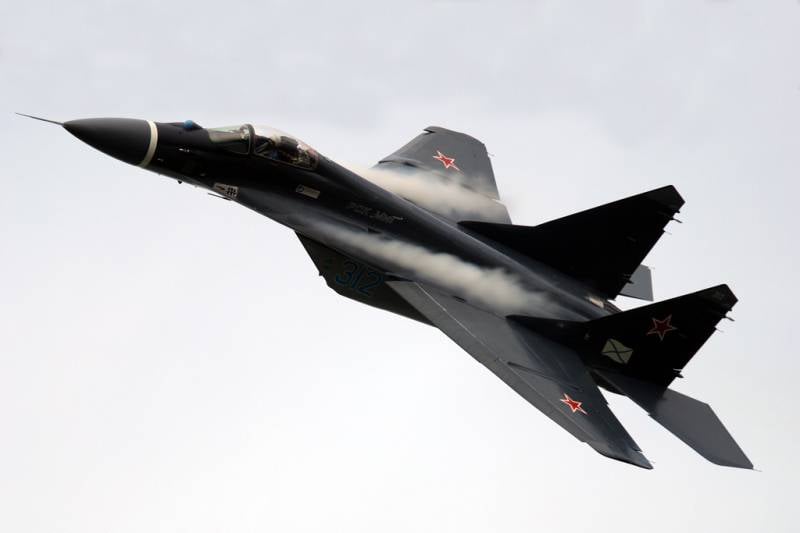

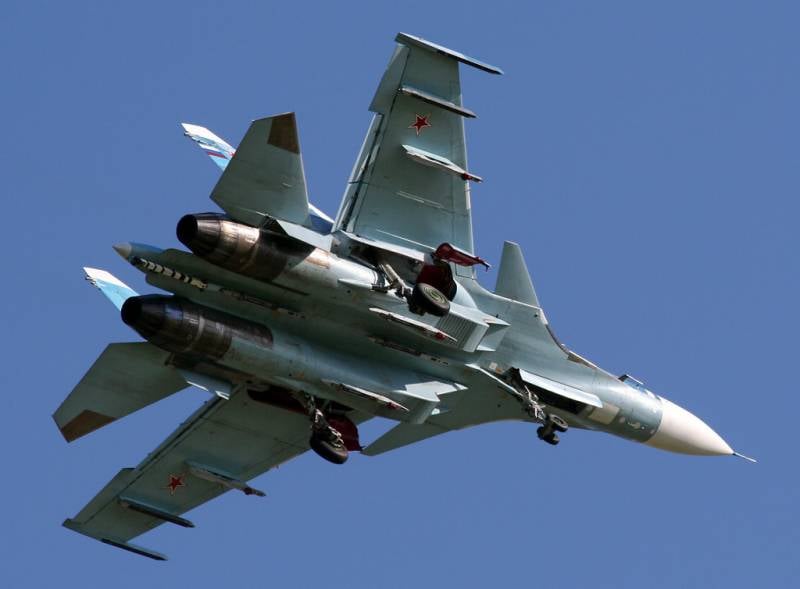
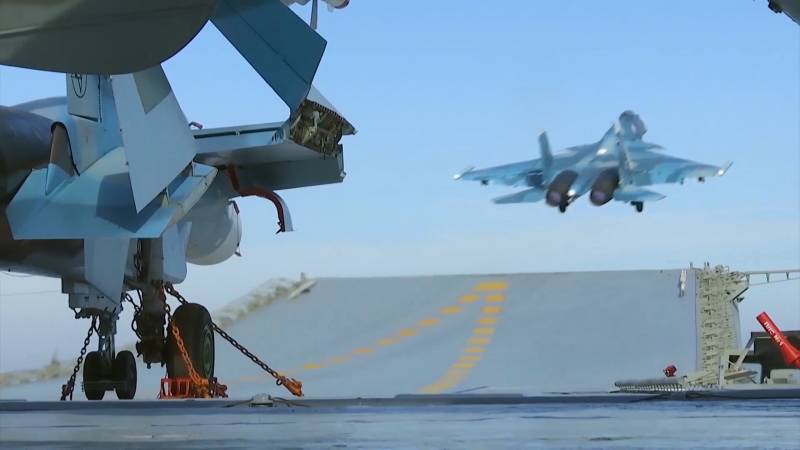
Information